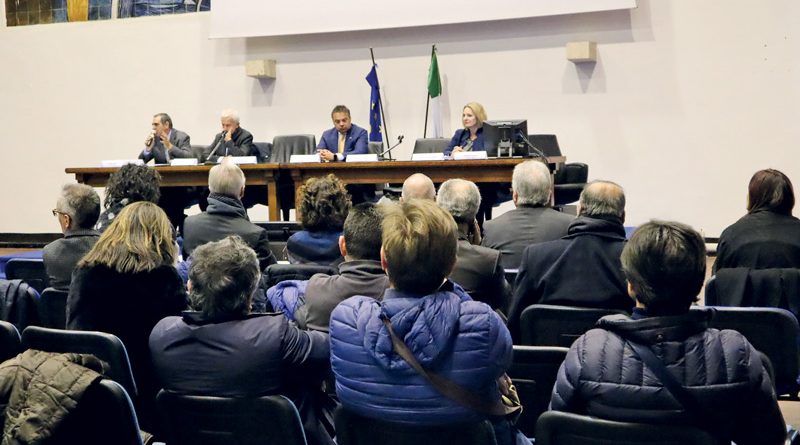Tomorrow’s Mechatronics Starts from the Schools
During a conference held last December 18th in Rome, AIdAM, the Italian Association of mechatronic automation, and MIUR, the Ministry of Education, University and Research, introduced the guidelines of the agreement officially approved in June 2018 to school principals from technical schools and ITS throughout Italy. With the aim of broadening the audience of schools potentially involved and extending the benefits of cooperation between schools and manufacturing companies to the largest possible number of students and teachers.
by Fabrizio Dalle Nogare
Let’s start, for once, from the data. About 2,645,000 students currently attend high schools, technical and professional institutes. Approximately 830,000 are those enrolled in technical schools and, of these, 65,000 attend courses on mechanics, mechatronics, automation or energy management. These figures – according to Fabrizio Proietti, MIUR executive – are quite compliant with the labour market requirement.
The question, therefore, moves on to the contents: do the technical schools and the ITS, that is to say the post-diploma specialization courses, adequately prepare the students to face the labour market? The impression is that there is (still) a lot to do. Or, at least, this is what AIdAM and MIUR think, after having signed last April an agreement (see box on the following page) and promoted a conference, also held at the ITIS G. Galilei in Rome. The major target of the event was introducing to the school principals coming from all over Italy the project arisen from the agreement itself. Judging by the number of participants and the interest shown in the course of the conference, such a project will definitely take off.
Bridging the skills gap
“The Italian manufacturing industry is mainly made up of SMEs – said the president of AIdAM, Michele Viscardi – who absolutely need workers prepared for the challenges of the near future. We need to bridge the skills gap with other European countries, led by Germany, giving more value to technical schools and ITS. Some of the most important aspects of the agreement that we have signed with the MIUR – added Mr Viscardi – are the upgrading of school laboratories, the organization of training courses for teachers and students, the efforts to develop the so-called soft skills, increasingly important to approach the world of work, and the writing of a book on assembly and mechatronics”.
An area, the latter, worthy of even greater attention in the near future. Let’s just think that, like other jobs related to the digital world, that of the expert in mechatronics will be one of the most requested in the near future. “We do not intend to overturn the school curricula, but rather to create study paths that may allow companies to rely on skilled technicians, in turn able to deal with machines and components”.
Transforming, more than reforming
From companies to schools, the step is quite short. Antonio Scinicariello, MIUR’s technical officer who coordinated and moderated the conference, described the path that led to the signing of the agreement and illustrated the next steps of the project. Antonietta Zancan, MIUR officer, spoke more specifically about the ITS and the new post-diploma training opportunities.
Late in the morning, the Undersecretary at MIUR and former school principal, Salvatore Giuliano, provided a more political point of view to the discussion. “The task of politics must be to assist the schools located in different territories, allowing these to make their best and ensure that the various experiences may become a shared heritage. Rather than reforming, we want to transform the school, starting from the bottom. And it is no coincidence that today both women and men coming from schools are involved in designing educational policies”.
A properly national project
Women and men coming from schools, it was said. In the afternoon, the principals of three of the four “case studies” – namely, the schools “Marconi” from Dalmine (BG), “ Paleocapa “ from Bergamo and “Monaco” from Cosenza – could tell their experiences and talk about the very first results of the collaboration with AIdAM, with particular reference to the laboratories, the activities promoted by the school and the involvement of the students. One of them, attending currently the second year at the ITS in Bergamo, could talk about his personal experience and the opportunities he had to get in touch with companies. “It would take an actual Plan to strengthen the school laboratories, which often do not have the right tools for a thorough training for students”, said Maurizio Adamo Chiappa, principal at the IIS “Marconi”, a school that actually sees a growing interest towards mechatronics and automation, thanks also to the presence of several manufacturing companies in the surrounding area. Giancarlo Florio, principal of the IIS “Monaco” in Cosenza, drew quite a different picture during his speech. In fact, in this case the surrounding territory is rather poor in terms of manufacturing companies. Also on this aspect – that is to say the creation of synergies between schools located in different contexts – it will be necessary to work in order to promote better integration. The representatives of AIdAM intervened to draw the strings of the day, underlining how complementarity is one of the primary characteristics of the project, literally unthinkable twenty years ago when the association was founded. “We are ready, as an association, to provide resources, people and know-how because we do believe in this cooperation” said the head of AIdAM Academy FrancoPerico, reaffirming the national character of the project and the desire to involve schools all over Italy. Also acting, among other things, to reduce the gap between the North and the South of the country.

